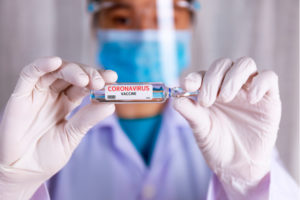With Johnson & Johnson expected to be the third U.S. COVID vaccine to enter the market, Americans will want to know which one works best. The temptation will be to compare data across trials, but Scott Gottlieb in the WSJ warns that vaccines and data are not all the same. Furthermore, as he notes, new variants of COVID may “demand vaccines that offer slightly different layers of protection and target slightly different parts of the virus.”
The good news from J&J is data shows the vaccine (only one shot needed) to be 70% effective against the virus. J&J is collecting more info to determine whether more protection would come from a booster shot.
Not Apples to Apples
New variants of COVID, writes Dr. Gottlieb, may demand vaccines that offer slightly different layers of protection and target slightly different parts of the virus.
The regulatory process must encourage this kind of portfolio diversification, while allowing tweaks to keep ahead of the virus’s twists and turns. The FDA is working on guidance to address new variants, which will include a pathway for updating vaccines.
The model should be the flu-vaccine process. Every year scientists develop the basic components for flu vaccines that are capable of targeting many different strains of the virus. But only the three or four strains expected to be most prevalent are put into production. The rest stay on the shelf, ready to be put into production should the flu take an unexpected evolutionary turn. The FDA should do the same for Covid.
In order to avert potential outbreaks of new variants, Dr. Gottlieb says it is essential that clinical trials be completed within several months. But even here there is more good news. Because vaccines are derived through synthetic processes using the sequence of the Coronavirus’s RNA, vaccines are relatively straightforward to update when new variants emerge.
If you’re willing to fight for Main Street America, click here to sign up for the Richardcyoung.com free weekly email.





